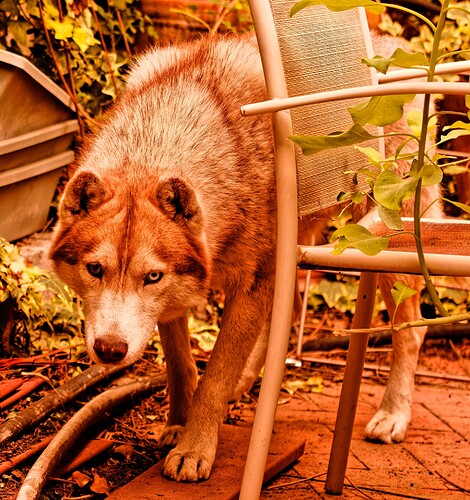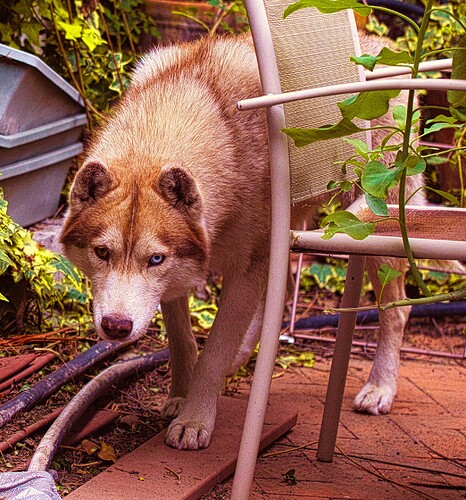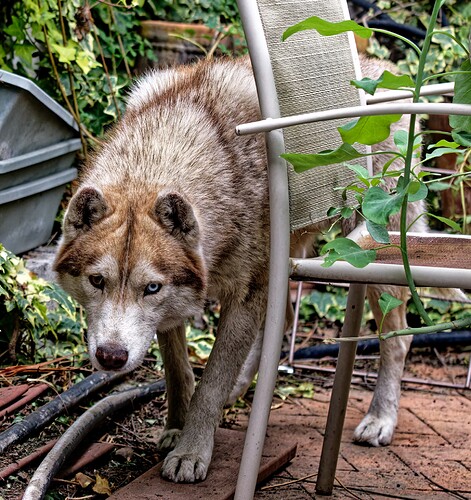I am attaching three JPEG images. A client requested images of a specific dog; images taken with my Nikon Z9, FTZII, Sigma 100-400 C, natural lighting, manual with auto ISO. The client looked at the result of one of my standard PL6E presets. I later processed the same NEF in Luminar Neo current, with a result that the client preferred. Please ignore this post until I can complete it – I will edit it once the network becomes more stable. Sorry …
White balance is completely different in the two images. In Luminar the white balance is somewhat conventional/accurate/realistic. In Photolab 6 the white balance is completely bonkers.
There’s no way a client could choose that image. The rendition in this case has almost nothing to do with the application used and everything to do with manual white balance
I have personally never seen DxO white balance so far off. with such an emphasis on reds. I suspect it may be the result of some additional setting. Could you upload the raw file and the .dop file so we can try to recreate the problem and identify the cause? Which of the standard PL6 presets did you use.
Mark
Is the first made in PhotoLab and the second one in Luminar Neo, or the other way round?
First image: either white balance is way off or there is some heavy hue shifting or color casting applied, kind of like a sepia look but still keeping the base image in color instead of B&W. That can be a creative choice. Personally I don’t like it much.
Second image: white balance is more conventional. There’s a bit of a magenta color cast, maybe because the white balance is not 100% precise or as an added effect (unless this was shot at sunset and there was some pink light going on); it can be seen most clearly in the dog’s back leg in the bottom right and in the gray bins in the top left. The image looks over-sharpened to me.
Both can be improved upon on IMHO, but it’s also a matter of taste and finding a look that both you and your client like, not of finding a look that forum dwellers like. ![]()
I was trying to edit my original post but to no avail. Below is one additional image.
The client needed images of a dog that had entered her property and that needed a home. She did not want to have the animal killed as would have been done by the local government animal control; using the images, she was attempting to find a dog rescue service that would place the animal. The dog would only come out of hiding when being fed; I had to assist with the “baiting” process to get some images, most of which were rejected. The attached image/s, cropped, provide some history. This image had the correct view, but did not reflect the correct appearance of the dog in the opinion of the client – more “brown” was needed. The image below is the result of my standard PL6E DeepPRIME XD settings, and looked to my eye rather like the dog – but it is the eye of the client that always is correct. Using various adjustments in PL6E with the client watching until the result looked “right”, including changing to a film rendering, etc., I got the brown image. I then tried Luminar Neo on the same NEF file, and with very little work, obtained the third image. The third image is closer to what the client wanted, although she would have preferred the dog image (not the background) more brown in the “dark” sections on the animal. Note that the lighting was poor with issues of wall/fence reflected lighting and heavy clouds. Seeing what Luminar Neo produced, is there a way for me to produce a PL custom preset that would be close just from the image rather than manually working control after control to get the “same” effect? [To further improve the situation, I would have attempted to mask just the dog (not easy given that the subject is occluded by the furniture) and independently adjust the subject as well as the background. ]
You can create and save any preset you want with PL Elite. But I would suggest what you saw with your first attempt was due to picking the wrong preset to start with. There is no such thing as a “normal” preset that is going to work for every shot. Which is why many of us recommend using the Optical Corrections only preset, as it doesn’t tend to change the colour and tonality like DxO’s so called “Standard” one does.
I thank every respondent for the above comments. Ms. Carter, I do NOT use the “standard” presets except for the optical correction characteristics that DxO provides for a specific body/lens combination. I had a set of “presets” (some strictly my own, some modified from the presets of others) when I was using Adobe workflow. Unfortunately, there seemed to be no easy mechanism of properly importing those into the Prime et seq of PL, and have developed my own for specific conditions, including a general one that works for most outdoor wildlife images I make. For example, when a location only uses red light for crepuscular or nocturnal subjects, from prior knowledge of what the subject should “look like” under daylight, I have a preset that more or less cleans up the image to “daylight” and has produced images acceptable to clients. (Aside: some of the wildlife photographers and videographers who work for major wildlife and nature documentary services (eg, National Geographic or Disney) often are permitted for “science” to use “regular” artificial lighting – but I do not work for such services.) Others have manually “cleaned up” the images, much as I had to when using Skylum Luminar Neo (that now has other issues unrelated to these). I appreciate the information, but what I am attempting to do is to reduce my personal workflow time (not the time it takes an application ultimately to “process” the image from, say, NEF to JPEG), and thus I will spend time to develop presets that I know produce results accepted by clients (and some presets are specific to “repeat” clients). Thus, what I was wondering if I have a NEF and a JPEG produced by workflow other than PL, can I “scan” the “alien” JPEG to generate a PL preset that would produce the “same” JPEG in PL from the NEF?
As an aside, I did not like the tint from the “brown” images I created in PL, but the client did. Under almost all circumstances, the client is “right”, even if I disagree. Hence, I am trying to automate through presets as much of the workflow process as possible, and not having to return to procedures almost – almost, and without any chemistry – as tedious as mechanical dodge and burn manipulating a dichroic enlarger head for each image (in those days, often from Velvia).
I haven’t seen any photo editing software that can do that. It would be interesting, and with Machine Learning algorithms these days it would even be possible, but it’s probably a rare enough use case that software developers haven’t chosen to invest money on that.
Regarding presets: PhotoLab has good preset support, but unlike with Lightroom there isn’t a whole ecosystem of people creating and distributing free and paid presets that you could pick from. I think your best bet is to learn the different tools in PhotoLab, understand what they do, and use them to create your own presets over time.
Regarding tweaking the color of the dog’s fur, I think the relevant tools would be:
- The HSL tool to shift specific colors in the image. You can check out this video tutorial (the HSL tool demo is after the first half, but it’s worth watching the full thing)
- Control Lines or Control Points to select the dog’s fur only, and apply some white balance, hue or saturation shifts to it. Here’s one video demo.
With HSL, Control Points or Control Lines it should be easy enough to selectively affect the dog’s brown fur only, without losing time making a mask.


